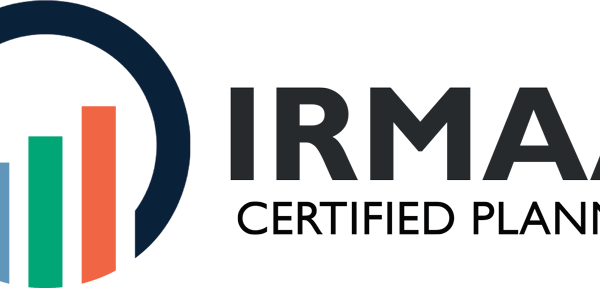Peeling back the layers of **2023 Medicare Part B premiums** reveals a landscape ripe with changes, and understanding these can feel like navigating through a dense fog. But here’s the thing: it doesn’t have to be overwhelming. We’re about to clear the air.
This year brings a sigh of relief for many with reduced standard monthly premiums and deductibles. Yet, there’s more beneath the surface, especially when income-related adjustments step into play.
Dive in as we dissect enrollment periods, financial help programs tailored for those who need them most, and prescription drug coverage nuances that could affect your pocketbook. Additionally, uncover the nuances between Medicare Advantage Plans and Original Medicare in this year’s comparison to better navigate your healthcare choices.
The goal? To arm you with knowledge so sharp; you’ll cut through any confusion surrounding your healthcare options in 2024.
2023 Medicare Part B Premiums Overview
For those of you monitoring your health-related expenses, prepare to be potentially delighted by the latest update. The standard monthly premium for Part B in 2023 has taken a slight dip to $164.90, down from what we saw last year. But wait, there’s more good news – the annual deductible has also decreased to $226.
This change affects millions of Americans who rely on Medicare Part B for outpatient care, durable medical equipment, and other necessary services like physician visits. These updates mean a bit more breathing room in budgets across the country.
Why this drop? It reflects adjustments based on projected health care spending which turned out lower than expected – something not often seen but certainly welcomed when it happens. So whether you’re new to Medicare or have been navigating its waters for years, these changes are likely to impact your financial planning around health care in 2024.
Understanding Income-Related Monthly Adjustment Amounts (IRMAA)
If you’re scratching your head wondering why your Part B premium seems higher than your neighbor’s, the answer likely lies in IRMAA. This isn’t a strict aunt coming to visit; it stands for Income-Related Monthly Adjustment Amounts. Essentially, if you’ve had a good year financially, Uncle Sam assumes you can chip in more for health care.
The crux of IRMAA is its reliance on your tax return from two years ago to decide if you owe extra on top of the standard Part B and prescription drug coverage premiums. For instance, high-income beneficiaries discovered that their total premiums varied significantly based on income levels in 2024. If this feels like being penalized for success, remember: This mechanism is in place to make sure Medicare remains robust, able to support countless individuals with their health needs.
To get into specifics without making our heads spin:
- Those with an adjusted gross income exceeding certain thresholds find themselves facing these monthly adjustment amounts.
- This means both Parts B and D could cost more depending on how flush with cash the IRS thought you were two years back.
- Fret not; there are silver linings like Medicare Savings Programs, designed to help those struggling with these adjustments.
Enrollment Periods and Options
Mark your calendars. Medicare open enrollment runs from October 15 to December 7, 2024, making it the prime time for you to make changes or enroll in Part B. But don’t sweat if this window slips by; special periods allow sign-ups under certain conditions.
If you’re pondering when to jump into Part B, understanding these timelines is crucial. It’s like catching a train; knowing the schedule ensures you don’t miss your ride to health coverage city. During open enrollment, you can tweak your plan without hassle—adding or dropping parts of Medicare or switching between Original Medicare and Medicare Advantage Plans.
Beyond standard enrollment periods, life events such as moving or losing existing coverage unlock special windows for change. These moments give a second chance at optimizing healthcare plans outside typical dates. Also noteworthy are programs designed to aid those struggling with costs—Medicare Savings Programs (MSP). They throw out a lifeline, covering the costs of premiums and more for those who qualify.
Financial Assistance Programs for Medicare Beneficiaries
If you’re a low-income senior or an adult with disabilities, figuring out how to afford Medicare might feel like trying to solve a Rubik’s Cube. But don’t fret. Special programs exist precisely to aid individuals in your situation, offering a helping hand.
Qualifying for Assistance
The key players in the game of financial assistance are the Medicare Savings Programs (MSPs). These superheroes of savings can swoop in and cover your Part B premiums, among other costs. To qualify, your income and resources need to meet certain criteria, which might sound daunting but it’s really about checking if your numbers fit their puzzle.
To throw your hat into the ring, you’ll want to start by filling out an application through your state Medicaid office. Yes, that means paperwork – but it’s worth it when there’s a chance at reducing those pesky expenses. If you’re curious about what these MSP thresholds look like or where exactly to apply, check out this resource on Medicare Savings Programs.
Beyond MSPs lies another layer of potential relief: Extra Help with prescription drug coverage costs. This could significantly lower or even eliminate what you pay for medications under Part D—because let’s face it, no one wants their budget busted by pill prices.
Prescription Drug Coverage Under Part B
If you’re navigating the waters of Medicare, understanding your prescription drug coverage options is crucial. Specifically, under Part B, certain medications are covered that play a vital role in many beneficiaries’ health care regimens. This includes immunosuppressive drugs which are essential for individuals who have undergone a kidney transplant.
In 2024, there’s an important update to note: the premium for continuing coverage of these life-saving immunosuppressive drugs has been set at $97.10. It’s a significant detail for anyone relying on this type of medication post-kidney transplant as it marks the continuation of their much-needed coverage.
When considering prescription drug coverage, it’s also helpful to understand how Medicare categorizes and handles different types of prescriptions under its various parts. While Part D typically covers most prescription drugs, Part B specifically caters to those that are administered in a doctor’s office or hospital outpatient setting—like chemotherapy treatments or certain shots—and now includes immunosuppressive drug premiums after kidney transplants starting from 2024.
Understanding this facet of Medicare is pivotal in managing your healthcare expenses and securing access to vital treatments. So whether you’re just enrolling in Medicare or reviewing your current plan during open enrollment periods, keeping abreast with such updates ensures that you can make informed decisions about your healthcare needs without any surprises down the line.
Impact of Adjusted Gross Income on Part B Costs
If you’re enrolled in Medicare, your tax return isn’t just a yearly chore; it’s a crystal ball. Social Security uses your adjusted gross income (AGI) to peer into your financial life and decide how much you’ll pay for Part B premiums. It might feel like the IRS and Medicare are having a secret conversation about you, but really, they’re just applying the rules of IRMAA – that’s Income-Related Monthly Adjustment Amounts.
Here’s the scoop: If you’re pulling in more dough than most, expect to chip in extra for your health care through higher monthly adjustment amounts. Think of it as Medicare’s version of “the more you make, the more you contribute.” This doesn’t kick in until your income hits certain thresholds though. For many beneficiaries this means sticking with standard rates unless their modified adjusted gross income goes beyond set limits.
To get all technical for a moment, these adjustments aren’t random penalties but structured tiers based on where your AGI lands. And if this sounds complex, don’t worry—Medicare lays out clear guidelines so there are no surprises come premium time. Whether or not IRMAA affects you can depend heavily on past earnings reported to Uncle Sam which makes reviewing those old tax returns as crucial as binge-watching your favorite series before season finale night.
The Role of Medicare Advantage Plans
Medicare Advantage plans, sometimes called Part C, are an alternative to Original Medicare. These plans are offered by private insurance companies approved by Medicare. They bundle Parts A and B and often include prescription drug coverage as well.
One key difference between Original Medicare and Medicare Advantage is the plan costs. With advantage plans, you might find lower out-of-pocket costs depending on the plan you choose. However, it’s crucial to compare benefits carefully because each plan has its own set of rules for how you get services.
Medicare Advantage plans also offer additional benefits that aren’t covered under Original Medicare like dental care, vision services, or wellness programs. Eligible individuals find these plans attractive for their ability to provide a broader spectrum of health care benefits, extending past the confines of standard offerings.
Navigating numerous policies can feel overwhelming, but these advantage plans streamline the process by merging all your coverages under one umbrella with a unified provider network. It can be particularly beneficial if cost sharing among various healthcare needs seems overwhelming.
To explore more about these options and help decide if they’re right for you, check out the available resources on Medicare savings programs. These could provide financial assistance to make health care even more affordable alongside your chosen plan type whether it be Original Medicare or an Advantage option.
Deductibles Across Medicare Parts A & B
Understanding the deductibles for Parts A and B is crucial for planning your healthcare expenses. In 2024, the Part A inpatient hospital deductible saw an increase to $1,600. This upfront cost can catch many off guard if they’re not prepared.
On the flip side, Part B offers a bit of relief with its annual deductible settling at $226 this year. It’s a slight dip from last year and helps make outpatient care more accessible financially. Whether it’s routine doctor visits or necessary medical equipment, knowing these numbers helps you manage out-of-pocket costs better.
Yet, grasping these statistics is merely the tip of the iceberg when it comes to navigating your healthcare finances. What role do these deductibles play in shaping the landscape of your health care expenditures? For starters, once you meet the Part A deductible, Medicare covers your inpatient care but remember that coinsurance rates apply after certain days of hospitalization. Similarly, meeting your Part B deductible means Medicare will start covering 80% of approved services like physician visits and durable medical equipment while you handle the remaining 20%. Understanding this balance between initial costs (deductibles) and ongoing ones (coinsurance amounts) is key to effectively managing your healthcare finances.
Navigating Changes to Prescription Drug Coverage
Part B has seen a significant update in 2024, especially concerning prescription drug coverage. For those needing immunosuppressive drugs after a kidney transplant, the premium is now set at $97.10. The modification guarantees sustained access to these essential treatments.
By tweaking the cost, Medicare underscores its dedication to aiding individuals with particular medical requirements. Keeping abreast of these revisions is essential for individuals impacted by this modification or pondering their choices regarding Part B prescription medication coverage.
Navigating the ever-evolving landscape of healthcare expenses remains critical, especially as Medicare evolves to meet your needs. With premiums for continuing coverage of immunosuppressive drugs established at $97.10 starting this year, it reflects an effort by Medicare to address the unique needs of post-kidney transplant patients who rely on these essential medications for ongoing health management.
To navigate these changes effectively, familiarize yourself with all aspects of your prescription drug coverage. Knowing the specifics can help you plan better financially and ensure uninterrupted access to necessary treatments.
Conclusion
Navigating 2024 Part B premiums just got easier. You’ve learned that this year, thankfully, brings lower monthly premiums and deductibles.
Remember: income matters. If you’re earning more, expect adjustments in your premium costs.
Being up-to-date is what really changes the game. Armed with this knowledge, navigating the complexities suddenly feels like sailing on smooth waters. And remember, when it comes to healthcare in 2024—knowledge is power.
Table of Contents:
- 2024 Medicare Part B Premiums Overview
- Understanding Income-Related Monthly Adjustment Amounts (IRMAA)
- Enrollment Periods and Options
- Financial Assistance Programs for Medicare Beneficiaries
- Prescription Drug Coverage Under Part B
- Impact of Adjusted Gross Income on Part B Costs
- The Role of Medicare Advantage Plans
- Deductibles Across Medicare Parts A & B
- Navigating Changes to Prescription Drug Coverage
- Conclusion
Streamlining the Medicare Surcharge Calculation Process.
Our Healthcare Retirement Planner software is designed to streamline the retirement planning process for financial professionals. By providing an efficient way to calculate IRMAA costs, our tool helps you save time and focus on other aspects of your clients’ retirement plans.
- Faster calculations: Our software quickly calculates IRMAA costs based on your client’s income and tax filing status, eliminating manual calculations and potential errors.
- User-friendly interface: The intuitive design of our platform makes it easy for financial professionals to input data and generate results with minimal effort.
- Data integration: Seamlessly integrate our calculator into your existing financial planning tools or CRM systems for a more streamlined workflow.
- Easy to Understand Reports: Export reports to easily share with your clients
- Tax and Surcharge Modeling: see how different types of income affects both taxes and your surcharges.
In addition to simplifying the calculation process, using our Healthcare Retirement Planner can also help improve communication between you and your clients. With clear visuals that illustrate how IRMAA costs impact their overall retirement plan, you can effectively convey complex information in an easily digestible format. This enables clients to make informed decisions about their healthcare expenses during retirement while ensuring they are prepared for any potential changes in Medicare premiums due to income fluctuations. To learn more about how our software can benefit both you as a financial professional and your clients’ retirement planning experience, visit the features page. Streamlining retirement planning processes can help financial professionals save time and resources, allowing them to focus on other areas of their clients’ needs. Automated calculation of IRMAA costs is the next step in streamlining this process even further.






